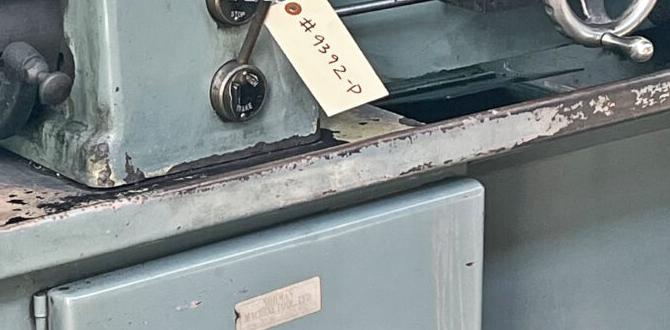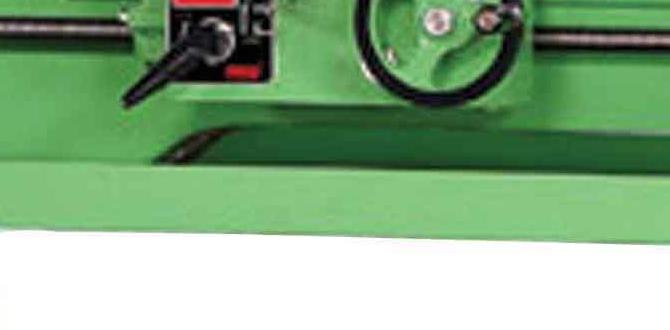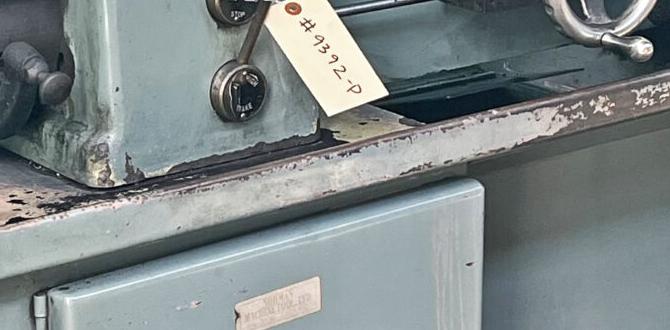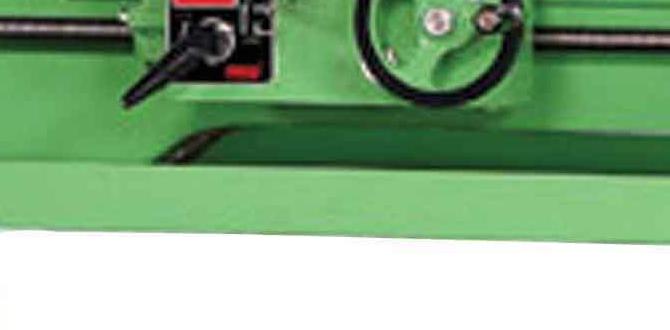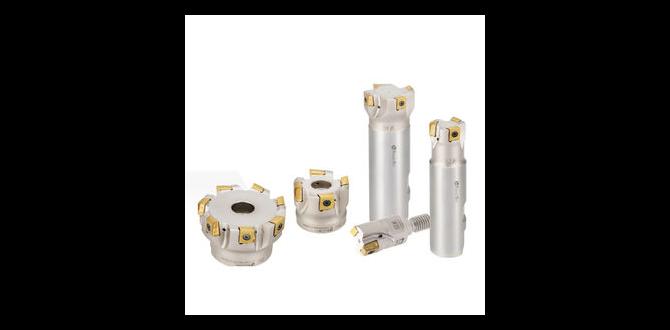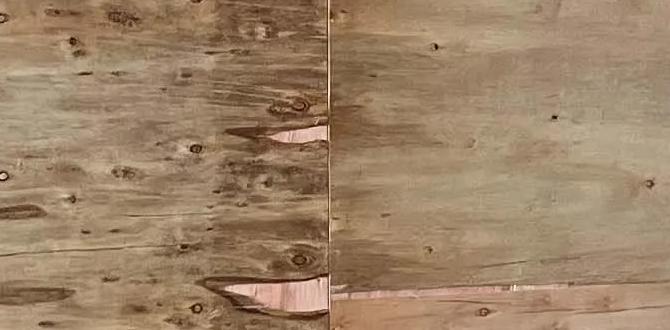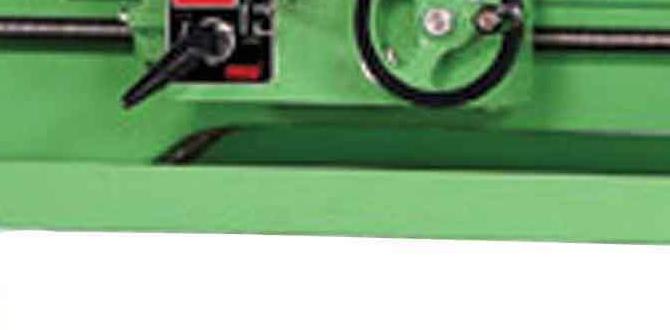Quick Summary: Find the best wood lathe tool sharpening stones for a razor-sharp edge. This guide covers grit recommendations, types of stones, and easy sharpening techniques to make your tools cut like new, ensuring smoother woodturning and safer operation. Get ready for effortless shaping!
Ever struggled with dull woodturning tools? It’s a common frustration, especially when you’re starting out. A blunt tool not only makes your work harder and less enjoyable, but it can also be dangerous. Instead of smoothly gliding through the wood, it tears and gouges, leaving a mess and a dull ache in your arms. The key to effortless turning, beautiful finishes, and safe operation lies in keeping your chisels and gouges sharp. And the secret to that sharpness? The right sharpening stone. But with so many options out there, how do you know which one is the “best”? This guide will cut through the confusion and show you exactly what you need to know to select and use the perfect wood lathe tool sharpening stone.
We’ll cover everything from understanding grit numbers to choosing between oil, water, and diamond stones, as well as the basic techniques to get your tools back in perfect working order. Get ready to transform your turning experience!
Why Sharp Tools Are Your Wood Lathe’s Best Friend
Think of your woodturning tools like a sharp knife in the kitchen. A sharp knife slices through vegetables with ease, while a dull one requires sawing and more effort, often crushing more than cutting. The same principle applies to your lathe tools. Sharp tools bite into the wood cleanly, allowing you to remove material efficiently and precisely. This means less physical exertion for you, a smoother surface on your workpiece, and a much more satisfying turning experience.
When your tools are sharp, they:
- Cut efficiently, requiring less force.
- Produce cleaner shavings and fewer splinters.
- Allow for more intricate shapes and finer details.
- Reduce the risk of catches and kickbacks, contributing to a safer working environment.
- Extend the life of your tools by not forcing them through the wood.
Conversely, dull tools can lead to:
- Tearing and splintering of the wood.
- Hesitant or jerky movements where smooth cuts should be.
- Increased likelihood of tool bouncing off the wood.
- Fatigue and frustration for the woodturner.
- Dangerous situations due to unpredictable tool behavior.
The reality is, no matter how good your lathe is, it’s only as good as the tools you’re using on it. And your tools are only as good as their edge. Investing a little time and effort into understanding and using the right sharpening stones will pay dividends in every project you undertake.
Understanding Sharpening Stone Grits: The Foundation of a Keen Edge
When we talk about sharpening stones, the most important factor is the ‘grit’. Grit refers to the number of abrasive particles per square inch of the stone’s surface. A lower grit number means larger, coarser particles, suitable for removing metal quickly to establish a primary bevel or repair a damaged edge. A higher grit number means smaller, finer particles, used for refining the edge and achieving a polished, razor-sharp finish.
Grit Categories and Their Uses
For wood lathe tools, you’ll typically encounter stones in these grit ranges:
- Coarse Grit (Under 400): Use these for initial shaping, repairing chips, or quickly re-establishing a dull edge. They remove metal rapidly.
- Medium Grit (400 – 1000): This is the workhorse range for general sharpening. It removes the material left by coarse stones and begins refining the edge, making it quite functional.
- Fine Grit (1000 – 4000): These stones polish the edge, making it significantly keener. They remove microscopic imperfections left by coarser grits.
- Extra-Fine/Polishing Grit (4000+): Used for achieving a mirror-like polish on the bevel. A highly polished edge is extremely sharp, glides through wood effortlessly, and leaves a superior finish on your workpiece.
The “Two-Stone” System: A Beginner’s Best Bet
For most beginners, a system of two stones provides a balance of efficiency and effectiveness without overwhelming choice. A common and highly recommended combination is:
- One Medium Grit Stone: Often in the 800-1200 grit range. This stone will do the bulk of the sharpening, re-establishing the bevel and honing a good working edge.
- One Fine Grit Stone: Typically 3000-6000 grit. This stone refines the edge left by the medium stone into something truly razor-sharp and smooth.
This combination allows you to quickly restore an edge and then polish it to a high level of sharpness. You can achieve excellent results with just these two stones, making it an ideal starting point for anyone new to sharpening.
Types of Sharpening Stones for Wood Lathe Tools
The abrasive material and how the stone is used (oil or water) are key differentiating factors. Each type has its pros and cons, influencing performance, maintenance, and cost.
Oil Stones
Oil stones use a lubricating oil (like mineral oil or a specific honing oil) to float away metal particles and prevent the stone from becoming clogged with “swarf.
- Materials: Often made from Aluminum Oxide or Silicon Carbide.
- Pros:
- Durable and long-lasting.
- Don’t require soaking before use (just apply oil).
- Can be very effective for creating a sharp edge.
- Relatively low maintenance beyond occasional flattening.
- Cons:
- Can be messy due to the oil.
- Metal particles can build up over time, requiring cleaning.
- Some finer grit oil stones can be expensive.
Popular oil stones include Norton India stones, which are a classic choice for many metalworkers and woodworkers alike, offering durable and reliable sharpening.
Water Stones
Water stones (sometimes called whetstones) use water as a lubricant. They are generally softer than oil stones and wear away more quickly, which means they are often self-sharpening, constantly exposing fresh abrasive. However, finer grit water stones can also be very hard and may require flattening more often. Their rapid swarf removal due to water is excellent for a clean sharpening process.
- Materials: Commonly made from Aluminum Oxide or Silicon Carbide, but often have a softer binder for faster cutting. Japanese water stones (like those made from natural stone or modern synthetic versions) are famous for their exceptional sharpening capabilities.
- Pros:
- Cut very quickly and efficiently.
- Produce a very keen, polished edge.
- Water lubrication is cleaner than oil.
- Self-sharpening action can provide a consistent edge.
- Cons:
- Require soaking in water before use (some faster soaking ones can be sprayed with water).
- Can be brittle and prone to chipping or breaking if dropped.
- May require flattening more frequently, especially softer ones.
- Can dry out and become unusable if not stored properly.
Japanese water stones are renowned for their high grit counts and ability to produce exceptionally sharp edges. Brands like King, Naniwa, and Shapton are highly regarded in the woodworking community.
Diamond Stones
Diamond stones have tiny, industrial diamond particles bonded to a metal surface. They are extremely hard and durable and cut very quickly.
- Materials: Industrial diamonds bonded to a flat, typically steel, plate.
- Pros:
- Extremely durable and wear-resistant.
- Cut very quickly and efficiently on almost any material.
- Do not wear down or require flattening (they stay flat).
- Can be used dry or with water.
- Cons:
- Can be the most expensive option upfront, although their longevity can make them cost-effective.
- Some users find the “feel” of sharpening to be different, lacking the feedback of traditional stones.
- The very coarse grits can remove metal very aggressively.
Diamond stones are an excellent choice if you want a long-lasting solution that requires minimal maintenance and can handle sharpening a wide array of tools, not just your lathe chisels. DMT (Diamond Machining Technologies) is a very popular and reputable brand for diamond sharpening plates.
Ceramic Stones
Ceramic sharpening rods and stones are also popular, especially for honing and touch-ups. They are hard and effective for refining an edge.
- Materials: Fired ceramic compounds.
- Pros:
- Very hard and durable.
- Effective for fine honing and polishing.
- Relatively easy to clean.
- Cons:
- Can be brittle.
- Lower grit options are less common or less aggressive for initial sharpening.
For wood lathe tools, particularly gouges and skew chisels, water stones and diamond stones are generally the most favored for their speed and ability to produce a polished, keen edge. Oil stones are a solid, reliable, and often more budget-friendly option.
Choosing Your Ideal Woodworking Sharpening Stone: Factors to Consider
Now that you know the types, let’s break down how to pick the best stone for your needs:
1. Your Budget
Sharpening stones range from affordable multi-grit combo stones to premium single-grit diamond plates. Decide how much you’re willing to invest. While it’s tempting to go for the cheapest option, investing in a decent quality medium and fine grit stone will serve you better long-term.
2. Types of Tools You Sharpen
If you primarily sharpen common tools like spindle gouges, bowl gouges, and skew chisels, a good water stone set or diamond plates will excel. If you also work with metal turning or need to sharpen very hardened steel, diamond stones might be a more versatile choice.
3. Speed vs. Finish
Do you need to sharpen quickly between turning sessions, or are you willing to take a bit more time for a superior finish? Water stones and diamond stones cut faster than many oil stones. For the absolute keenest, polished edge, higher grit water stones or diamond stones are usually the top performers.
4. Maintenance and Convenience
Water stones require soaking and can be brittle. Oil stones need oil and can get messy. Diamond stones are low maintenance and durable but cost more upfront. Consider what fits your workflow and workspace best.
5. Available Space
Some stones come as single blocks, while others are larger plates. Ensure you have a stable surface to work on during sharpening.
Recommended Sharpening Stone Combinations for Beginners
To help you get started, here are a couple of proven combinations that offer excellent value and performance:
Option 1: The Classic Dual-Grit Water Stone Set
This is a widely recommended setup for its balance of performance, ease of use (once soaking is done), and affordability.
- Stone 1: Medium Grit Water Stone (e.g., King KDS 1000, Naniwa Combination Stone 1000/3000 grit). This is your workhorse for establishing the bevel.
- Stone 2: Fine Grit Water Stone (e.g., King KGS 6000, Naniwa Super Stone 3000/6000 grit). This polishes the edge to razor sharpness.
These often come as combination stones, meaning both grits are on a single block, saving space and cost.
Option 2: The Durable Diamond Plate Duo
For those who want maximum durability, speed, and minimal maintenance, diamond plates are superb, though a larger initial investment.
- Plate 1: Medium Grit Diamond Plate (e.g., DMT Coarse/Fine Duo-Sharp, around 325 grit for coarse, 600 for fine – though DMT’s numbering system can be a bit different, this gives a comparable effect). This will rapidly refine the edge.
- Plate 2: Fine Grit Diamond Plate (e.g., DMT Fine/Extra-Fine Duo-Sharp, around 600/1200 grit range for a finer polish).
You can also buy single-grit diamond plates and build your own progression.
Option 3: The Versatile Oil Stone Combo
A reliable and often more budget-friendly option, especially for those transitioning from metalworking.
- Stone 1: Medium Grit Oil Stone (e.g., Norton India Medium, ~240-320 grit equivalent). Good for re-establishing an edge.
- Stone 2: Fine Grit Oil Stone (e.g., Norton India Fine, ~400-600 grit equivalent) OR a Soft Arkansas stone for a finer polish.
You might want to add a very fine grit sharpening stone or leather strop with a polishing compound for the final razor edge if using only oil stones.
All experienced woodturners have their favorite methods and stones, but these combinations provide a solid starting point for achieving excellent results.
Sharpening Techniques for Wood Lathe Tools
Once you have your stones, you need to know how to use them effectively. The goal with most woodturning tools, especially gouges, is to create a consistent bevel angle and a highly polished edge.
Preparation is Key
Flattening Stones: If you’re using water stones, they can get dished out in the center. You’ll need a flattening stone (a coarse, flat block) or a piece of silicon carbide sandpaper on a flat surface (like a granite tile) to keep your sharpening stones perfectly flat. Diamond plates, as mentioned, stay flat.
Lubrication:
- Water Stones: Soak them in water until bubbles stop coming out (usually 5-15 minutes, check manufacturer’s instructions). Keep a spray bottle of water handy to keep the surface wet during sharpening.
- Oil Stones: Apply a thin layer of honing oil to the stone surface before you start.
- Diamond Stones: Can be used dry or with a little water.
Safety First: Always work on a stable surface. Keep your fingers away from the cutting edge. If using a powered grinder for initial shaping, be extremely careful not to overheat the tool, which can ruin its temper.
Sharpening a Bowl Gouge (Common Example)
Bowl gouges are perhaps the most common tool on a wood lathe. The sharpening process aims to recreate the ‘wing’ and the swept-back edge.
- Set Your Angle: Hold the gouge against the stone at the correct bevel angle. For many bowl gouges, a swept-back wing is achieved by holding the gouge at about a 30-40 degree angle to the side of the stone, with the flute pointing upward.
- Sharpen the Bevel: Gently move the gouge in a circular or sweeping motion across the stone, maintaining the bevel angle. Only sharpen the bevel at this stage, not the end of the flute. Sharpen one side of the bevel, then the other, until you feel a slight ‘burr’ on the inside edge of the flute. This burr indicates you’ve ground through the metal.
- Refine with Medium Grit: Move to your medium grit stone and repeat the process, focusing on maintaining the angle and removing the scratches from the coarser stone.
- Polish with Fine Grit: Switch to your fine grit stone. Continue the motion, concentrating on creating a highly polished bevel. The smoother the bevel, the cleaner your cuts will be.
- Hone the Inside (Optional but Recommended): For an exceptionally sharp edge, you can touch up the inside edge of the flute. For water stones, this can even be done with the back (unsharpened side) of the gouge, or with a small sharpening stick or slip stone.
Sharpening a Skew Chisel
Skew chisels require a different approach to maintain their specific cutting angle and profile.
- Identify the Grind: Skew chisels have two bevels, one on each side, meeting at the point.
- Sharpen One Bevel: Place the skew on the stone with the correct angle for one of its bevels (typically 45 degrees, but check your tool). Work the bevel across the stone.
- Sharpen the Other Bevel: Flip the chisel and repeat for the second bevel.
- Maintain the Point: Carefully work the very tip of the skew to ensure it’s sharp and the point is well

